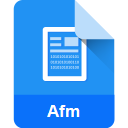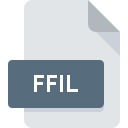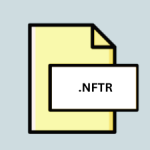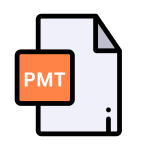.GLIF File Extension

Glyph Interchange Format File
| Developer | N/A |
| Popularity | |
| Category | Font Files |
| Format | .GLIF |
| Cross Platform | Update Soon |
What is an GLIF file?
Glyph Interchange Format (.GLIF) files are primarily utilized in the domain of font development and typography.
They store individual glyph data, encapsulating the visual and structural information of each character within a font. From defining the outline shapes to specifying metrics and guidelines, .GLIF files encapsulate the essence of typefaces in a standardized format.
More Information.
The journey of .GLIF files began in the early 2000s when Erik van Blokland and Just van Rossum conceptualized RoboFont—a font editing software tailored for the needs of type designers.
As part of this initiative, they introduced the Glyph Interchange Format to establish a standardized way of representing glyph data.
Initially conceived as a means to exchange glyph data within the RoboFont ecosystem, .GLIF files gained traction beyond their native environment.
Their adoption proliferated as other font editing tools and platforms recognized the value of interoperability and embraced the open-source nature of the format.
Origin Of This File.
The origin of .GLIF files can be traced back to the need for a common format that facilitates seamless interoperability between different font editing applications.
Developed as part of the RoboFont project, .GLIF emerged as a solution to the challenges posed by proprietary file formats that hindered collaboration and compatibility in the type design community.
File Structure Technical Specification.
.GLIF file encapsulates the visual and structural attributes of a single glyph within a font. The file structure adheres to XML (eXtensible Markup Language) standards, ensuring readability and accessibility across different platforms and software environments.
A typical .GLIF file comprises essential components such as:
- Glyph Outline: Defines the contour shapes of the glyph using Bézier curves or other vector-based representations.
- Metrics: Includes metrics data such as width, height, and baseline alignment, crucial for proper text rendering and layout.
- Anchors & Guidelines: Specifies anchor points and guidelines used for alignment and positioning within the font design.
- Metadata: Contains additional information about the glyph, such as its Unicode codepoint, name, and any custom attributes.
The modular structure of .GLIF files allows for flexibility and extensibility, accommodating diverse requirements of font designers and developers.
How to Convert the File?
Converting .GLIF files to other formats or vice versa typically involves specialized font conversion tools or scripting workflows.
Several font editing applications offer built-in functionality or plugins for importing and exporting .GLIF files.
To convert .GLIF files to commonly used font formats such as TrueType (.ttf) or OpenType (.otf), one can utilize tools like FontForge, TransType, or Glyphs. These tools facilitate seamless conversion while preserving the integrity of glyph data and font characteristics.
Conversely, converting fonts from binary formats to .GLIF files might require custom scripting or dedicated import functionalities provided by font editing software. These tools ensure a smooth transition while allowing users to leverage the benefits of the .GLIF format.
Advantages And Disadvantages.
Advantages:
- Interoperability: .GLIF files facilitate seamless exchange of glyph data between different font editing applications, fostering collaboration and interoperability.
- Transparency: Being XML-based, .GLIF files are human-readable and easily editable using text editors, enabling finer control over font design and customization.
- Standardization: The adoption of a standardized format promotes consistency and compatibility across various font-related workflows and tools.
Disadvantages:
- File Size: Storing glyph data in XML format can result in larger file sizes compared to binary formats, potentially impacting performance and storage requirements.
- Complexity: While human-readable, .GLIF files can be complex, especially for intricate font designs with numerous glyphs and metadata attributes.
- Parsing Overhead: Parsing XML data incurs computational overhead, which may affect processing speed, particularly in applications dealing with large font libraries.
How to Open GLIF?
Open In Windows
- Use any text editor such as Notepad or Notepad++ to open and view .GLIF files. Simply right-click on the file, select “Open with,” and choose your preferred text editor.
Open In Linux
- Linux distributions often come with built-in text editors like gedit or nano. You can open .GLIF files using these editors by navigating to the file and double-clicking it or using the terminal to open it with the desired editor.
Open In MAC
- macOS users can utilize TextEdit, the default text editor on macOS, to open .GLIF files. Simply double-click the file, and it should open in TextEdit. Alternatively, you can right-click on the file, select “Open with,” and choose TextEdit.
Open In Android
- While Android devices don’t typically have native support for opening .GLIF files, you can use third-party text editor apps available on the Google Play Store. Apps like Jota Text Editor or QuickEdit Text Editor can open and edit .GLIF files on Android devices.
Open In IOS
- iOS devices don’t natively support .GLIF files, but you can use text editing apps available on the App Store to open and view them. Apps like Textastic Code Editor or Koder Code Editor for iOS can handle .GLIF files.













